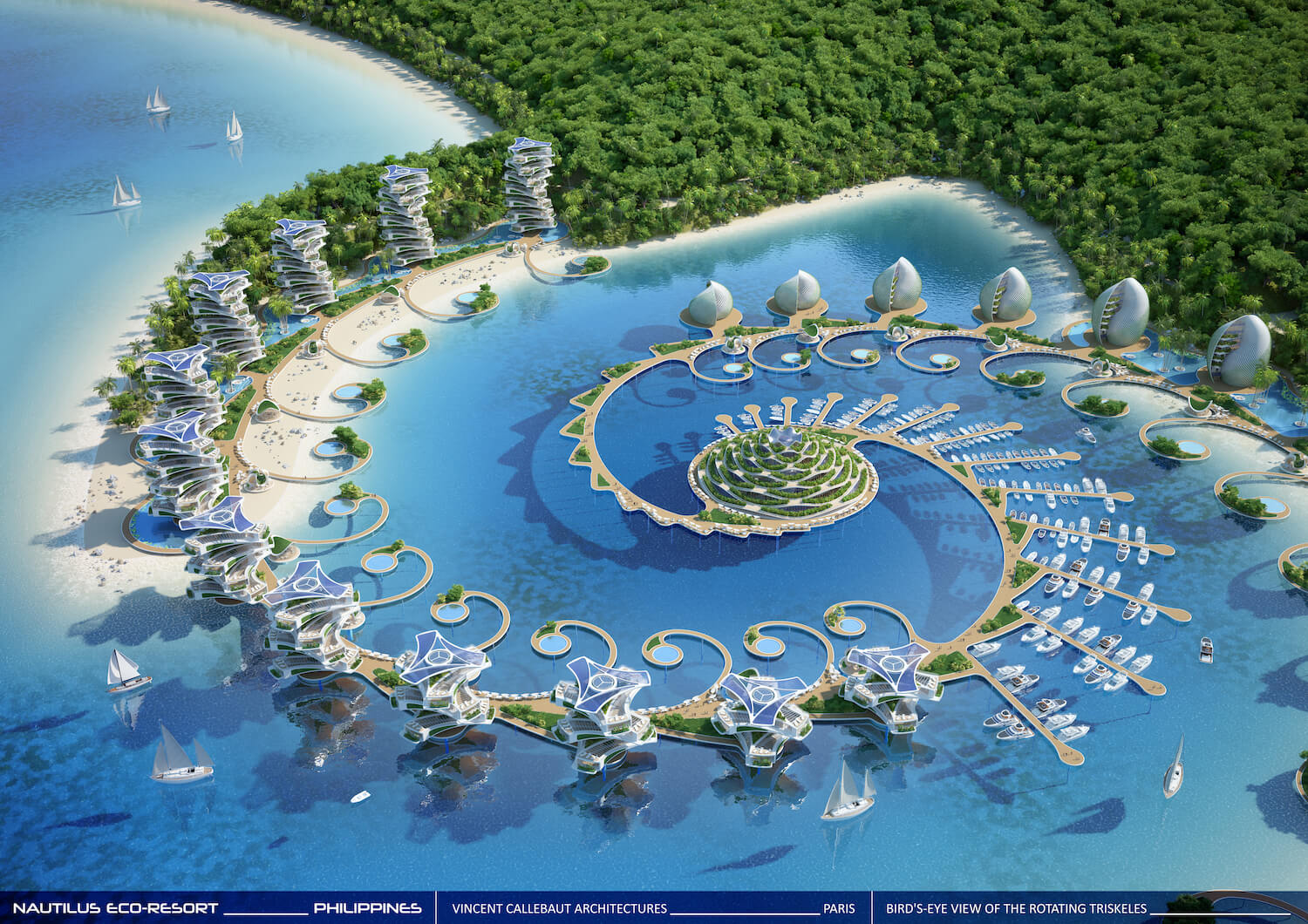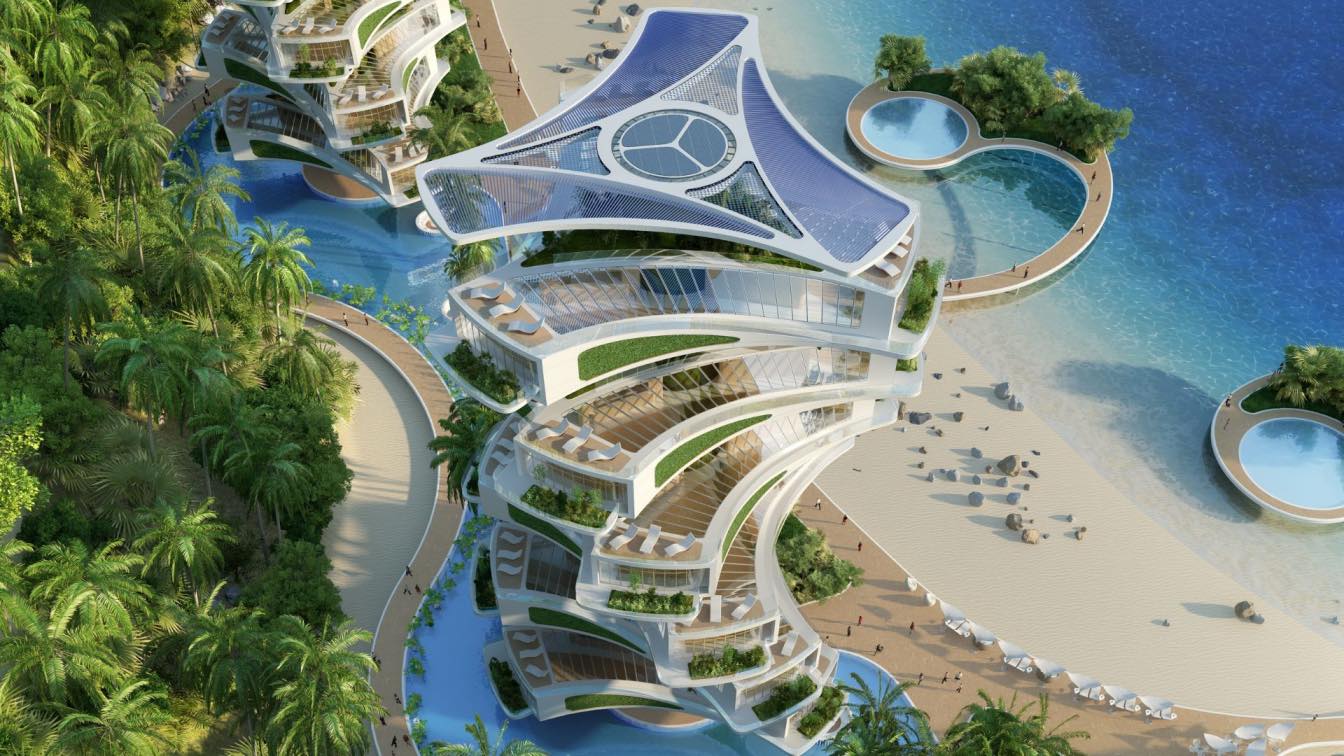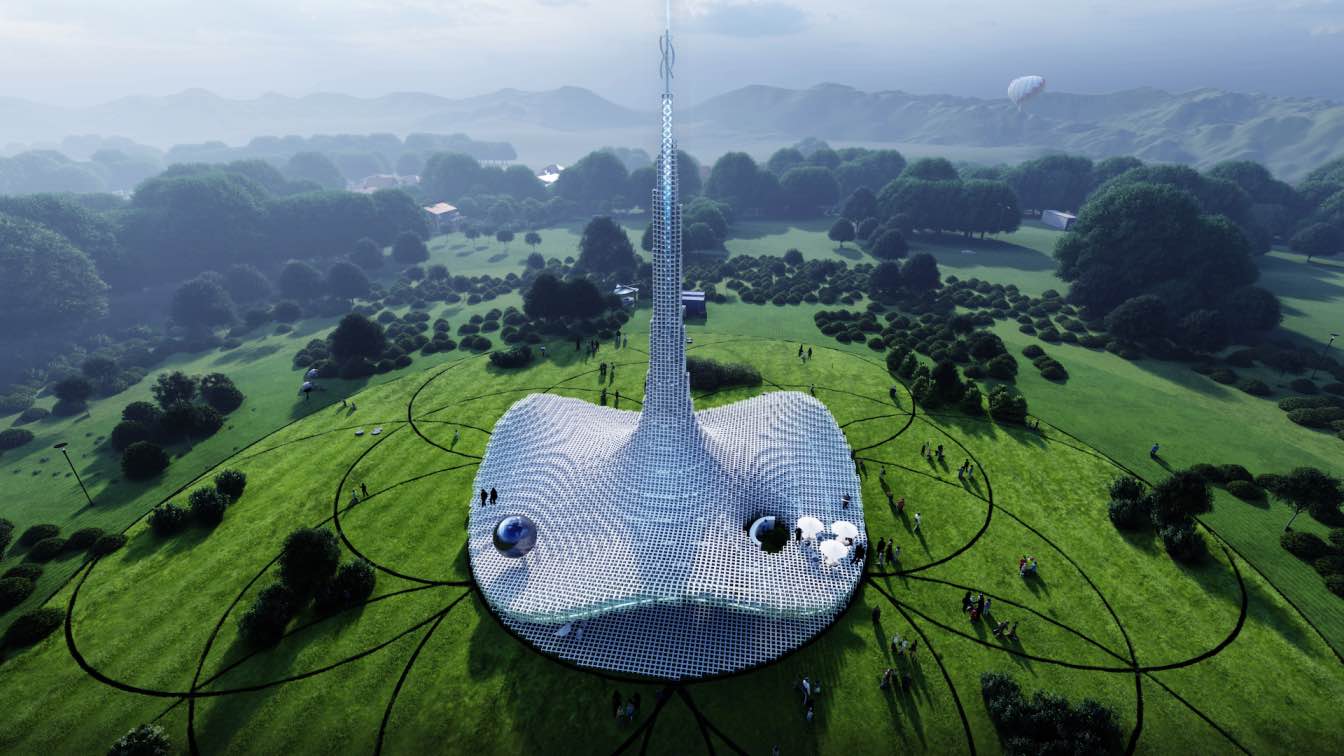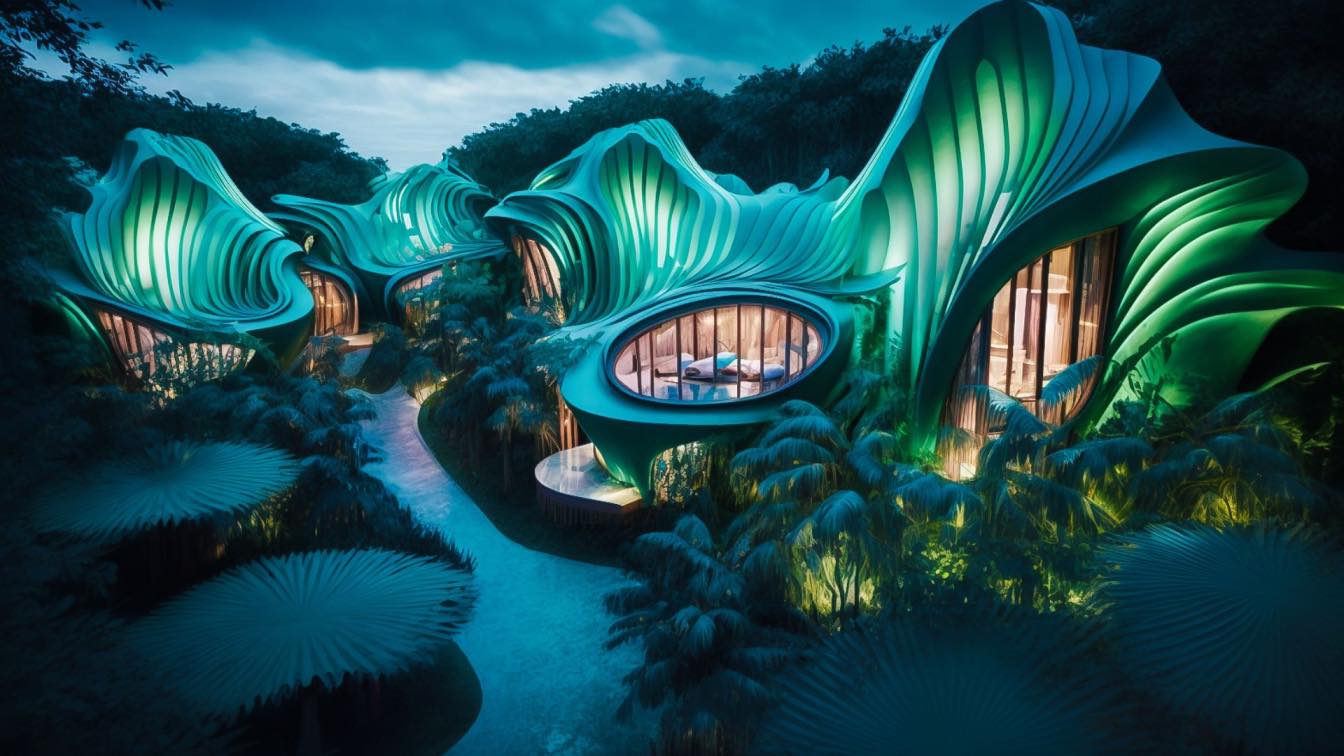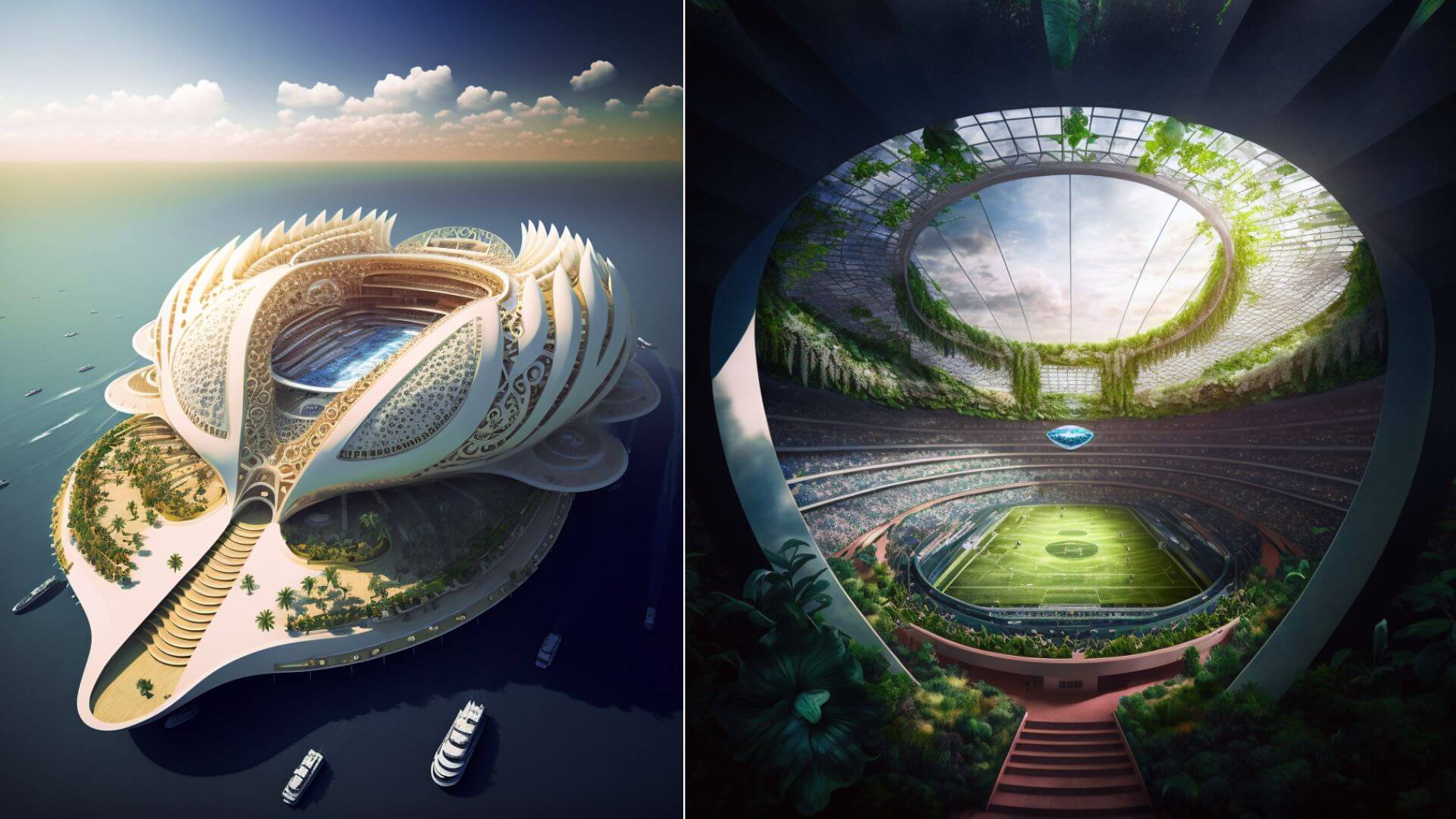Vincent Callebaut Architectures:"A Biophilic Learning Center Facing the Challenges of Sustainable Development"
"Zero-emission, zero-waste, zero-poverty"
1. THE PHILIPPINES, A COUNTRY IN CRISIS FACING ENVIRONMENTAL DEGRADATION
The Philippine seas are severely threatened. Over-fishing, mass tourism, massive pollution of plastic waste and toxic products, as well as climate change present real threats to the health of the archipelago and, of course, the survival of its inhabitants.
Corals are dying, mangrove areas are being destroyed, sea-grass beds are suffocated by erosion, and vital populations of fish and other marine species are declining dangerously.
And yet the Philippines, with its 7,641 islands and islets, and its 266,000 square kilometers of coastal, turquoise waters and bays, is one of the true sanctuaries of marine biodiversity in the world, at the top of the famous "Coral Triangle".
These seas harbor at least five species of marine turtles, 28 marine mammals, 168 cartilaginous fish, 648 species of mollusks, 1,755 fish associated with reefs, and 820 species of algae.
What would resilient tourism, capable of revitalizing the symbiosis between humans and the environment, look like? How should we humbly accompany the local population to implement urgent measures to establish marine protected areas, to protect them from severe floods, landslides, and typhoons, to restore waste management, and revitalize their biodiversity? In short, how can we reconcile the human adventure with the whole of life?

2. A PIONEERING ECO-RESORT FOR ECO-RESPONSIBLE, ETHICAL, AND UNITED TOURISTS.
Tourism has become the most important industry at the international level. Its potential to contribute to sustainable development is therefore substantial and can be reinvented. Since the early 1980s, ecotourism has been exploring ways to reconcile the socio-economic development of our societies with the protection of the environment.
One step further, the Nautilus Eco-Resort project is a pioneering, eco-tourism complex designed to unite the knowledge of the scientific community with the willingness of eco-tourists to optimize the revitalization and protection of a degraded ecosystem such as in the Philippines. Based on biomimicry, the architectures of this Eco-Resort are inspired by the shapes, structures, intelligence of materials and feedback loops that exist in living beings and endemic ecosystems.
Ethical and eco-friendly, the Eco-Resort promises to the host populations and travelers to be actively involved with engineers, scientists, and ecologists in the protection of the environment that it wants to discover.
This collaborative concept offers responsible ecotourism based on education and interpretation in a natural environment, where the resources and well-being of local populations are to be preserved and gradually restored in a voluntary approach to "reimburse ecological debt".
By minimizing its ecological footprint, the experience is centered on the preservation of nature and local urban ecology while respecting endemic ecosystems and agro-ecosystems.
While upgrading the natural heritage and culture, this "zero-emission, zero-waste, zero-poverty" project will be 100% built from reused and/or recycled materials from the archipelago.
Self-sufficient in energy and food, it will satisfy its needs thanks to renewable energies and permaculture. A zero-waste policy means that it will systematically upgrade its own waste into resources.
Through a co-creation process, the Eco-Resort will contribute to the well-being of local communities by including them in its planning, development, and operation.
Through crowdfunding, the project will generate funds for the site's conservation with the association of preservation of fauna and flora. It will directly support local economic development in the form of jobs and income. Finally, it will encourage respect for the archipelago's different cultures.
It is above all a project made to exchange and transmit ecological gestures between the natives and the newcomers. It will ask volunteer ecotourists to clean the washed-up plastic waste from beaches, put in place "cradle to cradle" recycling schemes, learn permaculture, protect coral crops, restore reasonable fishing, which will allow nature to regenerate, or strengthen natural protection against flooding.
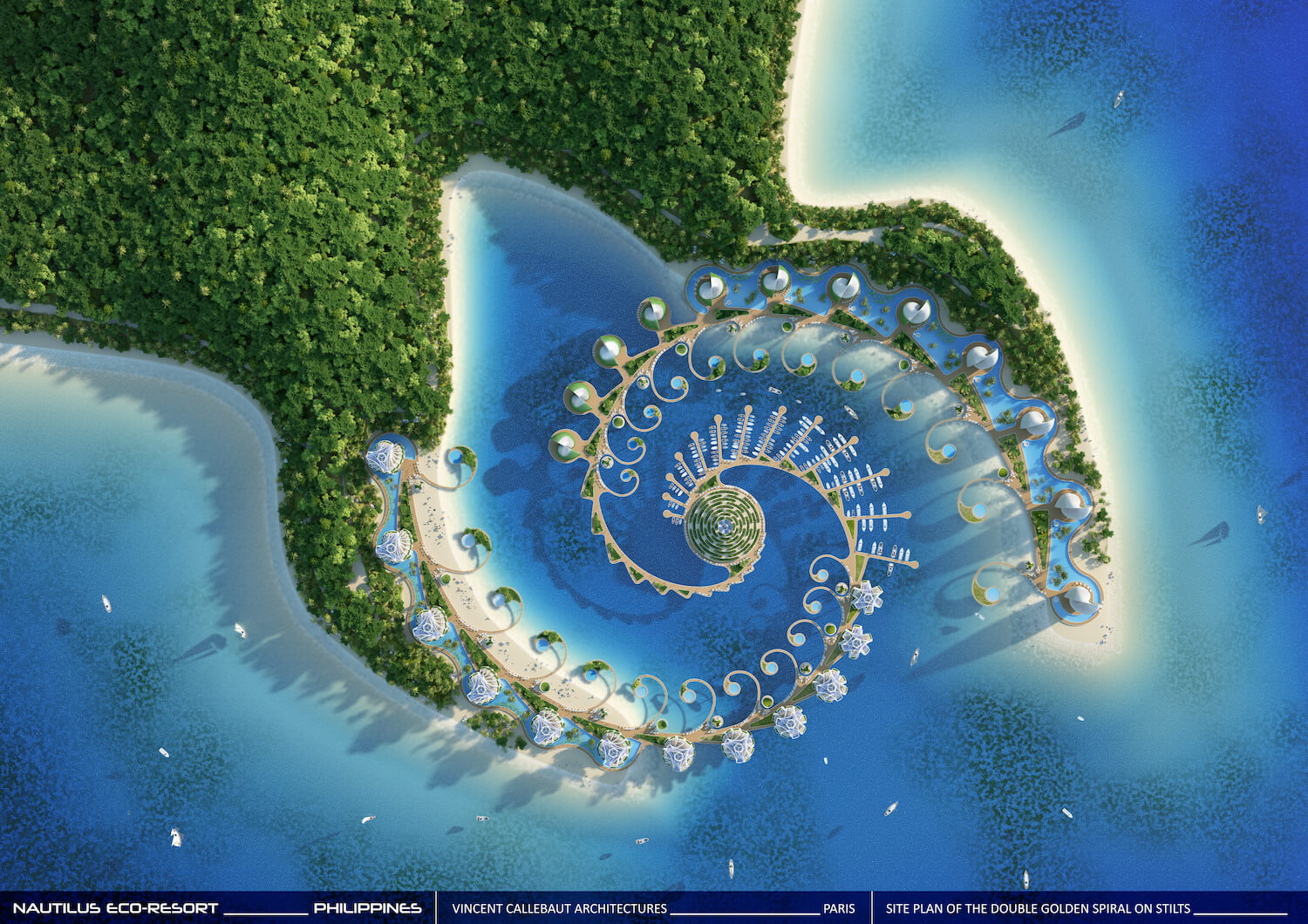
3. A LOW BIOPHILIC DESIGN BASED ON UPCYCLING AND ECO-MATERIALS
"Upcycling" means using waste and consumer products to make new objects or materials. In this process of industrial ecology and economical zero-waste logic, everything is transformed: series production collapses from factories, plastic waste recovered at sea, glass bottles, non-edible agricultural waste, or old boats.
The notion of waste is thus banned in favor of the notion of a closed cycle and circular economy.
To ensure that the Nautilus Eco-Resort is built in perfect harmony with the climate, the spirit of the place, and its resources, bio-sourced materials derived from vegetable biomass will be adopted. For example: co-products from agriculture or wood and hemp wool for thermal insulation, microalgae and linseed oil to produce organic tiles, local tropical wood species from eco-responsible forests for pontoons and wood floors.
Plants, their raw materials, are at the heart of the architectural project, simply because man has an innate need to be constantly connected to Nature. The five principles of biophilic design applied to the Nautilus Eco-Resort project are as follows:
- Strengthen the visual link with nature
- Focus on thermal variability and the renewal of air
- Enjoy dynamic and diffused light
- Multiply biomorphic shapes and patterns
- Optimize the sensory link with bio-sourced materials
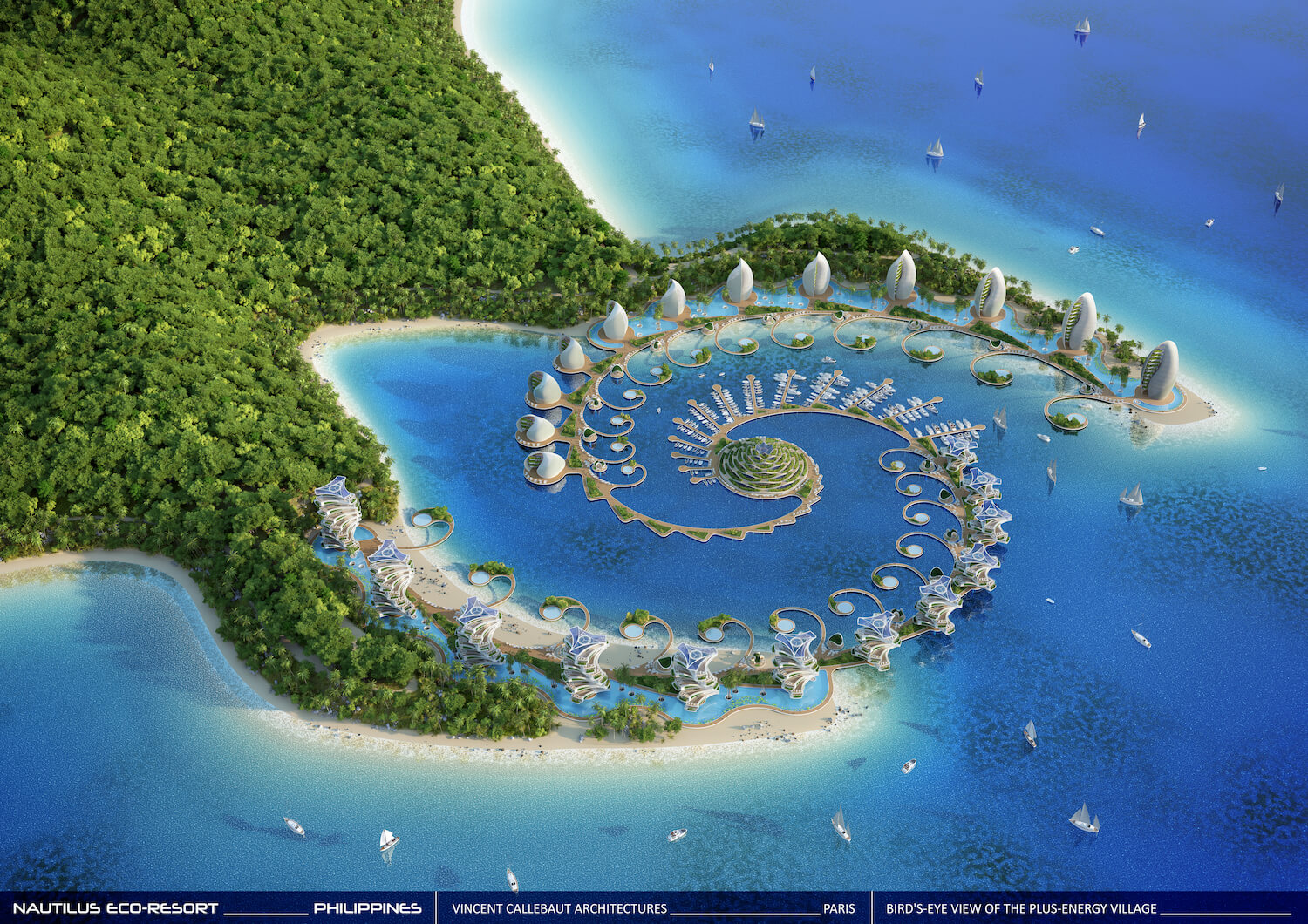
4. A PLUS-ENERGY VILLAGE IN A DOUBLE GOLDEN SPIRAL ON STILTS
The objective clearly defined in the architectural design of this Eco-Resort is to select with care the best of Low-Tech and High-Tech rather than choose one over the other.
Coiled at the foot of the hills in a crescent of fine sand, the Eco-Resort houses natural pools and waterfalls of vertical gardens.
The two main architectural entities - the shell-shaped hotels and the rotating apartment towers - wind up along two golden spirals respecting the Fibonacci sequence, a symbol of balance and harmony.
The height of each building increases with the convolution of the two spiral pontoons from the central island hosting the nautical center and the scientific research laboratories under its large plant roof.
The whole is dense to better preserve the territory and agricultural land. It is accessed mainly by sailboats or electric boats with flat bottom to limit the ecological footprint of road infrastructures.
This sustainable village is built on telescopic piles that produce, on the one hand, ocean thermal energy by exploiting the difference in temperature between the surface and deep waters of the sea, and, on the other hand, tidal energy which exploits the marine currents in kinetic energy by capturing them using hydro-turbines. Frigories for cool air and kilowatts for lighting are thus produced by renewable sources.
The façades and roofs combine plant walls and photovoltaic cells to increase the thermal inertia of the building, optimize natural cooling, and generate electricity.
Producing more energy than it consumes, the Eco-Resort thus achieves a positive energy balance. The added value of energy is thus redistributed in real time via a mini smart-grid to the local community, making them self-sufficient.
Rainwater is used and the gray water is biologically recycled in waste stabilization ponds bordering the gardens, while organic waste is recycled into biomass.
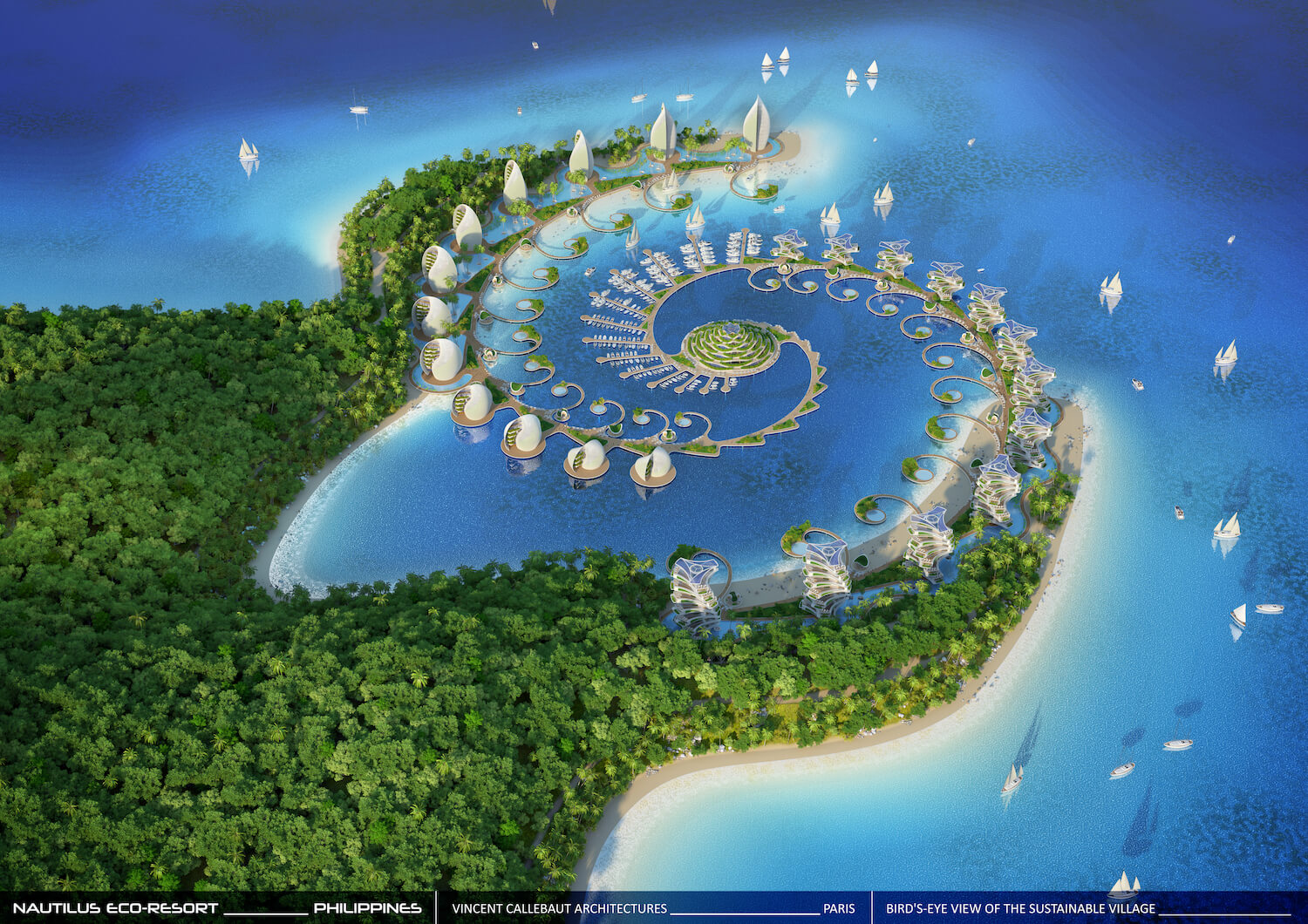
Each architectural entity offers a specific experience:
- Rotating triskeles: To the East, 12 small spiral towers of varying heights invite travelers to live in apartments turning on their axis and following the course of the sun. Distributed in three branches, the 54 modules of three dwelling units fully rotate 360 degrees in one day. The 162 apartments offer exceptional views towards the landscape. The facades are adjusted surfaces integrating ramps to access the panoramic terraces. The central mat incorporates the vertical circulation and is covered with lush vegetation walls. At the top, a triskel roof also integrates solar tubes producing hot water and photovoltaic pergolas.
- Green shells: To the West, 12 small museum-hotels in the form of a sea snails seem to emerge out of the water. On the lower floors, there are exhibition spaces explaining in particular the environmental and socio-cultural challenges of the archipelago. A bio-cement structural
moucharabieh is deployed in a three-dimensional spiral to cover the programmatic functions distributed in alcoves. This bio-cement incorporates microorganisms improving its performance by inducing the precipitation of calcium carbonates in recycled concrete, as does a real shell to form its exoskeleton. These 12-living nautiluses feature a self-stable shell covered with vegetable essences that are to be protected on the island. Their two openings form funnels and are closed by curtain walls, incorporating silicon cells in imposts and green balconies in cascades.
- Petals and corals: Punctuating the two-large golden spiral quays, small pavilions with organic and quasi-maternal shapes invite ecotourists to rest and relax along the water. The "petals" are covered with a vegetated hyperbolic roof while the shape of the "corals" is inspired by an Enneper triple surface, spiraling to erase any boundary between the inside and the outside. From each of their 22 pavilions, scientists have access to the fish and coral reef ponds in order to reintegrate endangered wildlife and plant life.
- Origami mountain: In the center of the lagoon, the scientific research center and the nautical recreation base are located under a CLT (Cross Laminated Timber) framework. This is covered with 360 degrees of undulating ramps unfolding like giant origami. On the roof, there are vegetable gardens and organic orchards supplying, in short circuit, the kitchens of the restaurants of the Eco-Resort. The architecture is furtive and resembles the surrounding hills. This artificial mountain has a sports pool and a seawater leisure pool surrounded by all the scientific laboratories in order to increase exchanges between researchers and ecotourists. It also hosts an elementary school, a children's home and sports halls for local youth.
In a world that is shrinking, the Nautilus Eco-Resort project wants to extend the field of action of a triple-zero eco-tourism: zero-emission, zero-waste, zero poverty. Discover the world without distorting it. Revitalize ecosystems instead of impoverishing and polluting them. Actively participate in the restoration of cultural heritage. Exchange without arrogance and enrich yourself with the local communities by sharing eco-responsible behaviors.
In the years to come, the relationship that we decide to maintain with nature will determine the sustainability of the Homo-Sapiens that we are. With this mindset, the Nautilus Eco-Resort is resolutely committed to the concept of environmental resilience, militating for a new social system that is concerned about human and planetary health!
